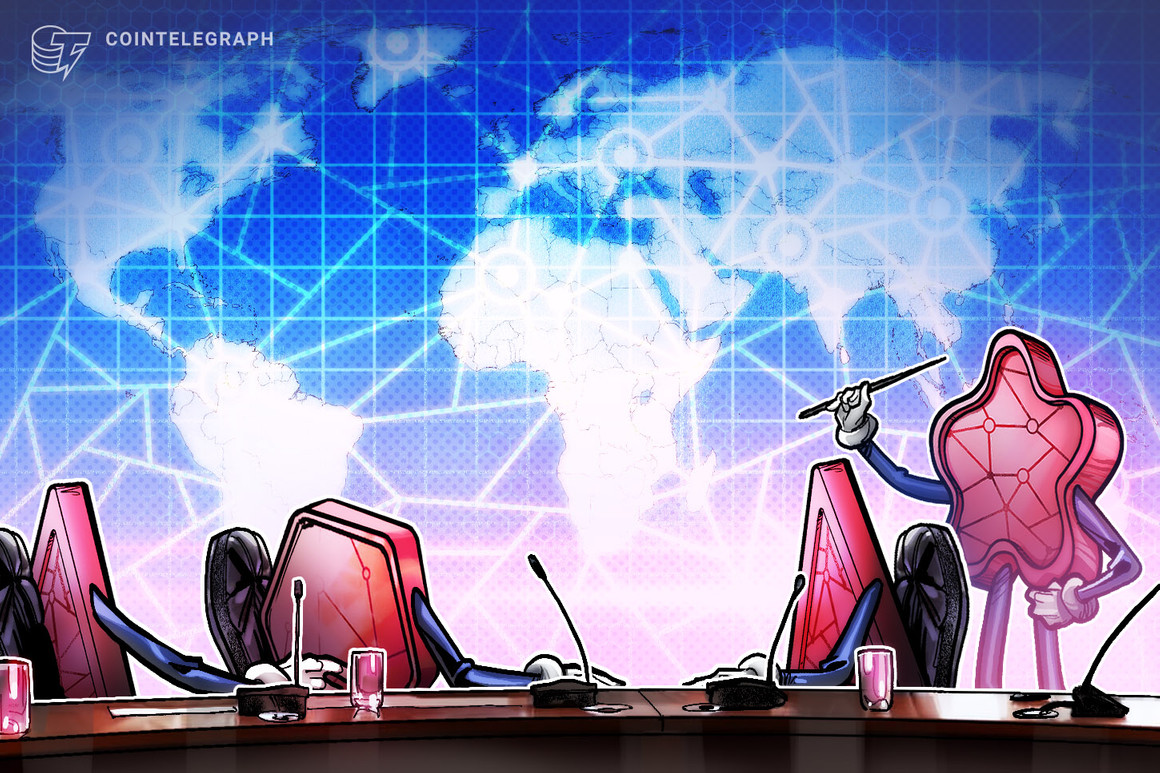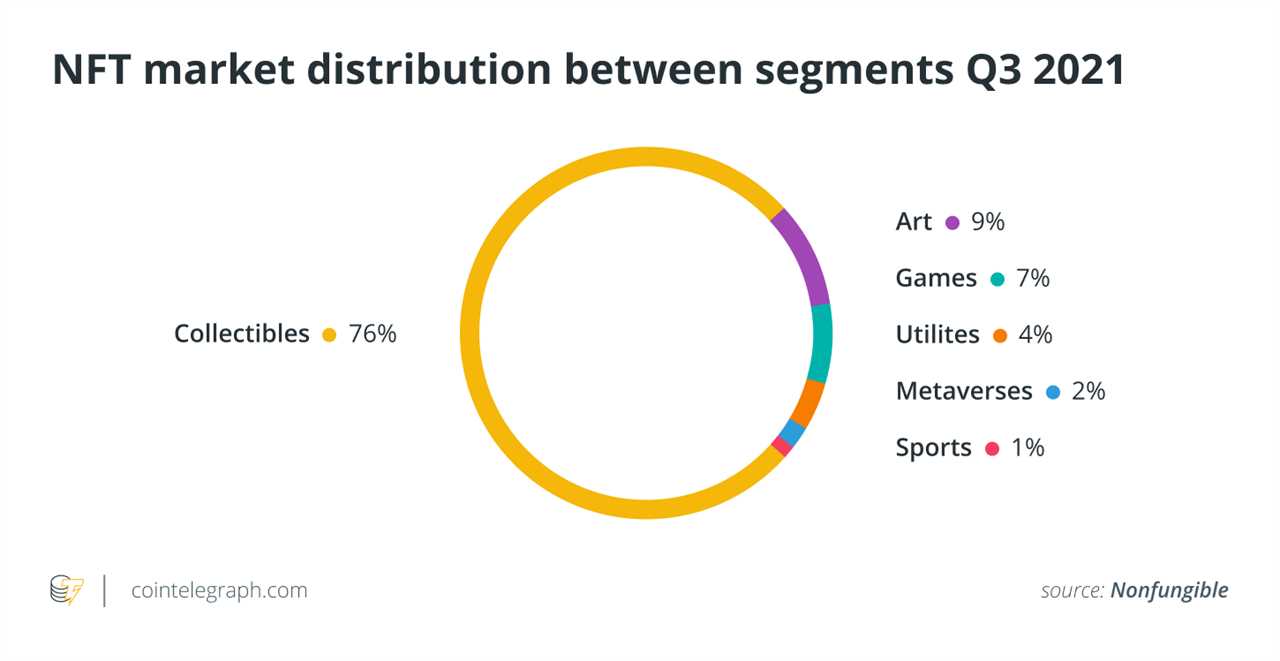
Many businesses and big brands have already jumped on the nonfungible token (NFT) bandwagon, including Nike, the National Basketball Association, Pepsi and even Taco Bell. But are these just for the show, or are these NFTs creating value? Much like digital services have become essential for every business in and outside of the technology sector, I believe that tokens — and, specifically, NFTs — are likely to become equally crucial in the emerging Web3 economy for at least two reasons.
First, my view is that NFTs tokenize ideas at the atomistic level, creating rivalry and exclusivity around goods or services. Markets cannot form when goods and services are non-rival — when one person’s consumption does not trade off with another’s — or when they are non-excludable — when it is prohibitively expensive to gate access to a good or service with a price mechanism. NFTs, on the other hand, create rivalry and exclusivity by leveraging smart contracts on the blockchain that deliver NFTs to peoples’ digital wallets when they make a purchase.

Second, I also believe that organizations can use NFTs to efficiently attract and engage different tiers of customers each in their own unique way. Whereas traditional marketing involves selling goods and services at a discount, perhaps for a limited duration of time, NFTs allow brands to target specific customers and reward those who want to engage. For instance, perhaps a fashion brand decides to airdrop discount codes or special offerings that are not available anywhere else to NFT holders. Normally, that would be prohibitively expensive to do at scale, but NFTs provide a way.
Related: Why are major global brands experimenting with NFTs in the metaverse?
Building community
To date, however, most of the NFT applications have been among bigger brands — or at least, so it seems based on media coverage. But either way, smaller organizations and even independent business owners will benefit from NFTs in the years ahead if they invest the time and energy to understand how they work. In fact, just think about the types of businesses that are most likely to benefit from NFTs: It is precisely the smaller organizations that do not have as much of a marketing budget to implement large-scale campaigns and discounts that benefit from the reduction in cost that NFTs provide to target consumers and invite them into a community.

Forget thousands or hundreds of thousands of dollars that go toward buying email lists, creating sales funnels, and conducting surveys and market research. Understanding competition and knowing your consumer is always going to be important, but the landscape is fundamentally different when you think about reaching people on a blockchain based on their opting in and the ability to track what people are actually buying and engaging with in a transparent way.
That’s not to say marketing doesn’t matter. Marketing and visibility do matter insofar as consumers need to learn about the goods and services that are being offered. But the mechanism behind it all is changing — simply having a big budget is not going to have as much bang as a smaller organization or independent business owner who has a clear community of loyal customers. NFTs are simply a new technological mechanism for conveying rival and exclusive goods and services to people who value them — they are not a substitute for creating valuable goods and services in the first place.
Related: Web3 relies on participatory economics, and that is what is missing — Participation
Take, for instance, the positive effects of airdrops and governance tokens, which I’ve covered in Cointelegraph Magazine before, citing Gary Vaynerchuk and 3LAU. When used with intentionality and prudence, airdrops are a great way of rewarding early users and building a close community. Then, as momentum builds, the community grows and enters into a new phase.
Enhancing B2B services
Although it’s easy to see how NFTs can enhance the consumer experience, ranging from fashion to content creation, what about businesses that sell services to other businesses?
The principles are the same. Imagine, for example, a consultancy where businesses bid over time with different consultants by buying their NFTs. Then, consultant income would vary based on market demand and supply, providing stronger incentives for each person to carry their weight and add value in the process, as well as an opportunity for businesses to hire their preferred top talent.
The same could go for an institution of higher education where faculty produce NFTs of their content and can license it out to businesses as an additional source of revenue, decreasing the need for growing tuition. Such an approach would also encourage faculty to create content that actually engages with the demands of the marketplace, rather than just talking about them.
Beyond the outward-facing component, think about the impact that tokens could have on the internal labor market of an organization. One of the biggest challenges within organizations is the absence of a price mechanism, dating back to contributions by the late Nobel Laureate Ronald Coase in a 1937 paper, as well as another Nobel Laureate Oliver Williamson in a 1981 paper.
Since prices in a market function to allocate supply and demand, a problem exists within organizations: There is no price! Instead, internal labor markets and organizational decision-making function through hierarchies. But these are inefficient, and there is a wide array of transaction costs — or factors that drive a wedge between what people want and need to exchange.
Related: Demystifying the business imperatives of the metaverse
Such frictions can be resolved through the use of an internal economic system where tokens are used to facilitate exchange. For example, raising an employee’s salary might be a risky bet, but paying them in tokens creates additional skin in the game and incentives to perform since the tokens can only be redeemed if the employee remains in the organization. Obviously creating such an internal ecosystem is not simple, and there are costs and benefits to evaluate in more detail, but at its core, tokens have the potential to fundamentally transform the conversation about transaction costs.
Taking stock
It’s easy to get caught up with the buzz about NFTs — and even fungible tokens — without knowing why. Clearly, there’s something special in the Web3 revolution we’re in, but sometimes it’s hard to put our finger on why. I believe the secret sauce is in the ability for NFTs to create rivalry and exclusivity at the atomistic level around ideas — and that has profound implications worth exploring further.
This article does not contain investment advice or recommendations. Every investment and trading move involves risk, and readers should conduct their own research when making a decision.
Title: Beyond the hype: NFTs can lead the way in transforming business experiences
Sourced From: cointelegraph.com/news/beyond-the-hype-nfts-can-lead-the-way-in-transforming-business-experiences
Published Date: Sun, 05 Jun 2022 03:11:00 +0100






